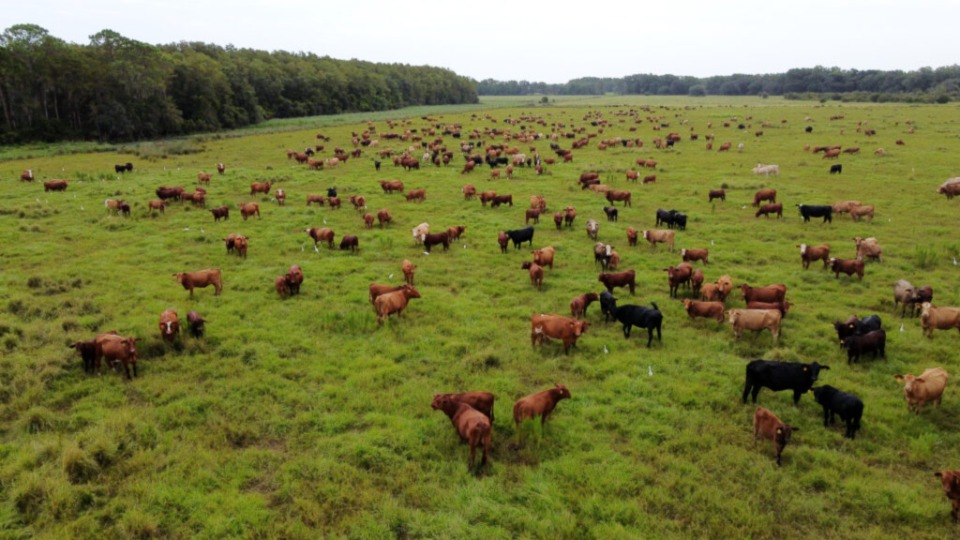
This story appears here courtesy of TheChurchNews.com. It is not for use by other media.
By Scott Taylor, Church News
ST. CLOUD, Fla.
Both in formal publications and informal conversations, one of the largest cow-calf ranching operations in the country is called by a few names: Deseret Ranches of Florida, Deseret Cattle and Citrus, and sometimes simply Deseret or the Ranch.
The varied names for the 300,000-acre property in central Florida are perhaps fitting, given its diversity of operations.
For the record, its official name is Deseret Ranches.
By any name, the ranch is the flagship cattle operation of AgReserves, a for-profit investment affiliate of The Church of Jesus Christ of Latter-day Saints.
And operations extend beyond beef cattle — from citrus to shells, from sod to solar, and from water management to wildlife. That diversity reaches to a mosaic of wetlands, woodlands, pastures and citrus groves.
The ranch also puts an emphasis on sustainability, as the seven-decades-old company continually seeks to improve its cattle herd, operations, natural resources and relationships with individuals both inside and outside the property line.

Five years ago, Deseret Ranches centered its sustainability effort on four pillars — environmental stewardship, animal health and welfare, community and worker impacts, and economic and operational efficiency.
Founded in 1950 southeast of Orlando, Deseret Ranches began as 50,000 acres of cutover timberland and low-quality grassland, with the acreage quadrupling in only a couple of years. Seven decades of effort and expansion later, it is a world-class operation for beef cattle.
President Gordon B. Hinckley’s statement in April 1991 general conference rings true: “We have felt that good farms, over a long period, represent a safe investment, where the assets of the Church may be preserved and enhanced, while at the same time they are available as an agricultural resource to feed people should there come a time of need.”
Deseret Ranches is part of a portfolio of agricultural properties operated by AgReserves Inc., a diversified, multinational for-profit company affiliated with The Church of Jesus Christ of Latter-day Saints. The ranch pays local, state and federal taxes; is an equal opportunity employer; and doesn’t receive government subsidies or taxpayer-funded price supports.
The ranch is as interested in developing quality employees and managers as it is in producing quality beef; it seeks individuals who can contribute in various operations and divisions throughout the Church’s agricultural arm.
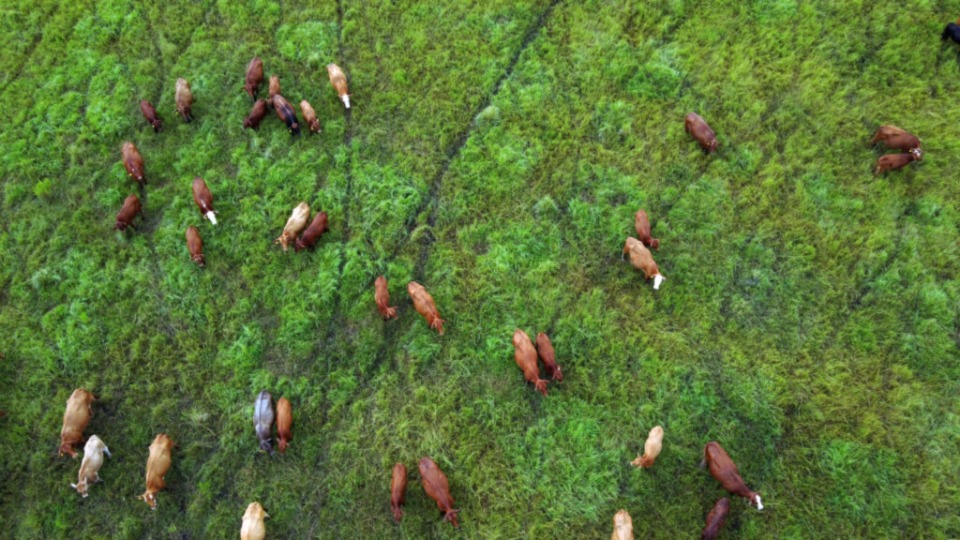
Cattle: the prime product
Here’s why the plural “ranches” in the company name seems apropos. The ranch maintains a herd of some 42,500 cows; that herd, in turn, is divided into more than a dozen management units.
With an average of about 3,100 cows, each unit would be considered a large cow-calf ranch on its own. Groups of cattle in the units can be broken down to even smaller herds and rotated among several pasture areas.
Cattle on the ranch are bred to fit Florida’s hot and humid environment, mostly Brahman crossbred with Angus, Simmental, Red Poll and South Devon. Each year’s calf crop is trucked from Florida to the Midwest and Southwest to be finished there.
Deseret Ranches focuses on humane treatment and care of the cattle, with zero tolerance for abuse. The priority of providing healthy living conditions goes beyond just food and water; well-being concerns include disease prevention, cattle handling when they are moved to and from the ranch, and even animal safety during hurricanes.
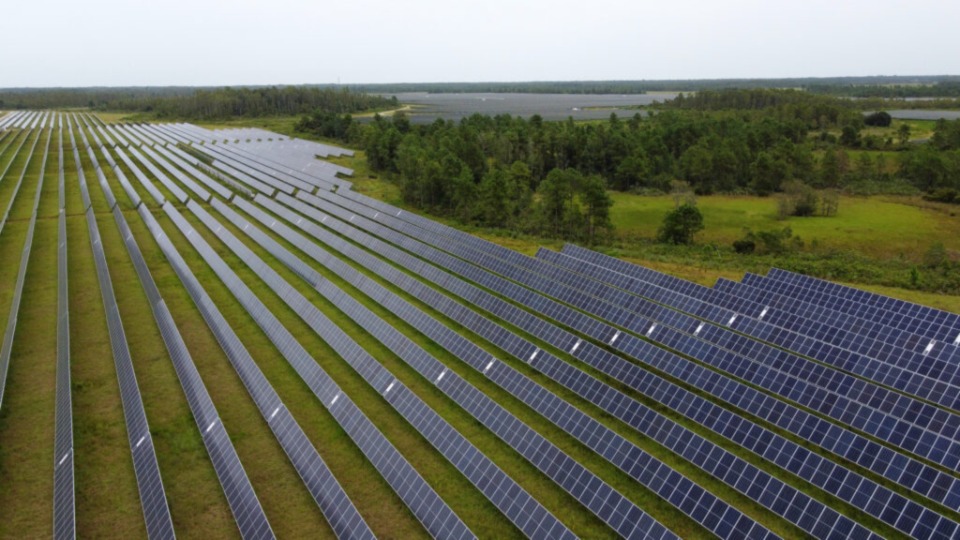
Diversity: from citrus to solar
Cattle will always be the ranch’s core business, says Clint Richardson, Deseret Ranches general manager. “But what makes this property and operation unique is the diversity of enterprises that we have and the ability to, in a sustainable way, utilize all of those resources that are on the ranch.”
That diversity starts with citrus, a staple resource from the start. The ranch counts some 200,000 trees over 1,600 acres — mostly Valencia oranges for juice, but there are some fresh-market offerings of oranges, tangerines and tangelos. However, citrus production is on the decline, with a local o
Other produce grown on the ranch range from small fields of potatoes and corn to rotational crops, while timber harvesting and natural regeneration yield pine, cypress, palm and hardwoods.
Some areas are leased for sod production used in landscaping and roadway projects; other areas are used for removal of dirt for roadbeds and urban development needs. And contractors excavate fossilized seashell deposits up to 50 feet deep, with the shell material used as road-base materials.
And then there’s solar. When Florida Power & Light began pursuing renewable energy sources, it approached Deseret Ranches several years ago about leasing land for solar panels. After a look at available property and how it would fit with operations, the first of three utility-scale solar fields were installed a couple of years ago. Two more planned installations will establish a total of five solar sites on the ranch.
“It’s a really good working relationship,” said Don Whyte, the ranch’s vice president of planning, adding that the flexibility of sustainability “means looking for additional opportunities to capture value — in this instance, clean, renewable power from the sun.”
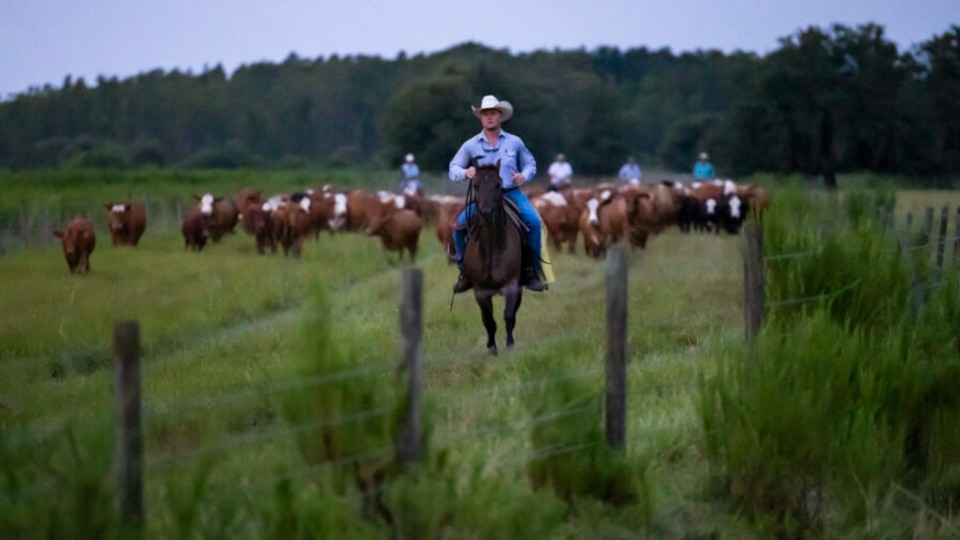
People: a powerful investment
Deseret Ranches isn’t just into beef production. Through development and training, it’s producing individuals who not only shine at the ranch but who can also continue their careers at other ranches, operations or positions within AgReserves.
“A lot of blood, sweat and tears have gone into where we are at today,” Richardson said. “And we’re very cognizant of sacrifices of those who have gone before us — we stand on their shoulders.”
And ranch managers are striving to build similar shoulders for the future, too, working with a staff of 90 full-time employees, from cowboys in the saddle to office workers in desk chairs.
“It’s a privilege to help people reach their potential,” Richardson said. “We take that charge very seriously.”
And relationships with neighbors beyond the fences are important, too — interactions with nearby agricultural operations, community leaders and residents. Community involvement is a core value, with the ranch and its workers woven into the fabric of trade associations and local activities and events.
Deseret Ranches does its part to invest in local resources, using local businesses as suppliers, engaging in outreach with government and civic leaders, hosting visitors and working with local youth groups and service organizations. While the event has been canceled in recent years because of COVID-19 restrictions, the ranch holds an annual employee rodeo that raises funds for local charities.
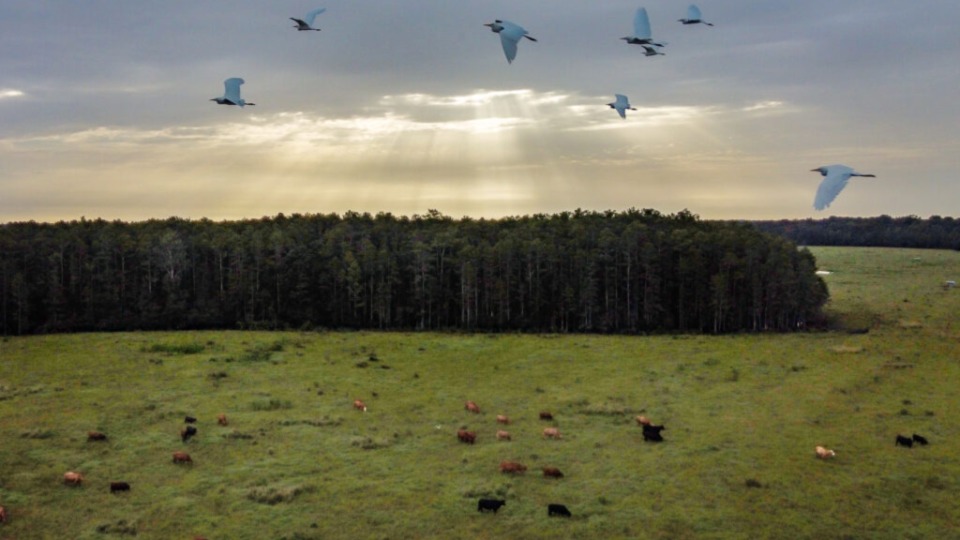
Wildlife: management and protection
Deseret Ranches is home to 350 species of wildlife, 250 being species of birds. Practices, programs and partnerships benefit both the management and protection of the ranch’s wildlife.
“There’s a whole lot more going on beyond raising beef out here,” said Jase Taylor, ranch wildlife manager, as he points to the myriad of symbiotic relationships on the property between the cattle and the cattle egrets and the alligators and the wading birds.
The ranch takes pride in having become a safe haven for endangered or threatened bird species — wood storks, wood ducks, roseate spoonbills, sandhill cranes, bald eagles, kestrels and snail kites. One project involved reworking a half dozen island areas, without public funds or regulatory compulsion, to create a nesting refuge.
“It didn’t cost us much time and effort but in turn (the effort) created the largest man-made wood stork rookery in the world, with more than 400 nests,” said Taylor. The deepening of the water protects the 400-plus nests of the storks and other birds from predators like raccoons and snakes.
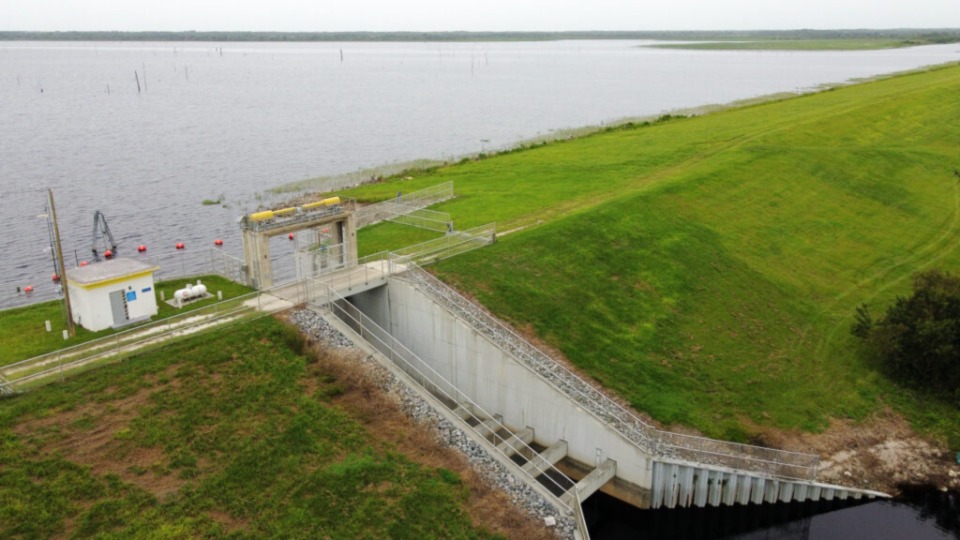
Water: always a concern
For a ranch in a wetlands-laden peninsula that gets upward of 55 inches of rainfall annually, water remains a precious commodity needing focused management.
Kent Jorgensen, the ranch’s land and government affairs manager, says Florida is 30% to 40% water, if one considers both the bodies of water and wetlands unusable for development. And the ranch’s challenges include getting enough water in February’s dry season and getting extra water off pastures during July’s heavy rains.
Water management on the ranch is not just protecting its availability and moving it as needed to dry pastures or from inundated areas. It also involves water quality, which is a key issue, and the ranch water bodies — several reservoirs and retention areas hundreds of acres in size — aid on all fronts.
While its runoff water in the 1990s was already of a higher quality than that of the St. Johns River, the ranch constructed a 500-acre reservoir — Jug Island — and other small water-retention areas to help better utilize surface water, capture stormwater, create a filtration flow to improve water quality and establish additional natural habitat for waterfowl. A second retention reservoir, East Point, was recently put into operation.
Ranch managers see these projects and ongoing attention given to reservoirs and waterways “as essential to allowing future agricultural use of the property,” Jorgensen said.
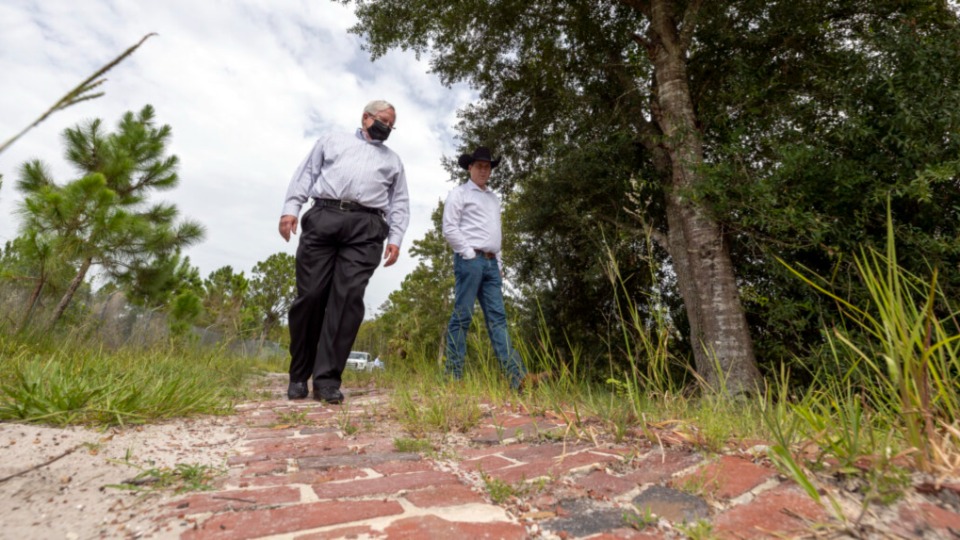
Planning: an eye to the future
Spread over three counties and flanked by the likes of Walt Disney World, Florida’s Space Coast and the expanding metro Orlando area, Deseret Ranches has what neighboring communities and government entities want to keep an eye on for the future: land and water.
For years, ranch managers have worked with state, county and local governments on a variety of planning projects, such as road and rail transportation, urban planning and development, and future water availability and uses.
Whyte says the ranch strives for open relationships and to “respectfully engage” with people of goodwill to establish common ground. He points to cooperative efforts like long-term land-use plans for parts of the ranch to create a framework for future sustainable communities while protecting natural resources in decades to come.
And what does Whyte see a decade or two — or seven — in the future for Deseret Ranches? “I think we’ll always have a ranch of consequence,” he said.
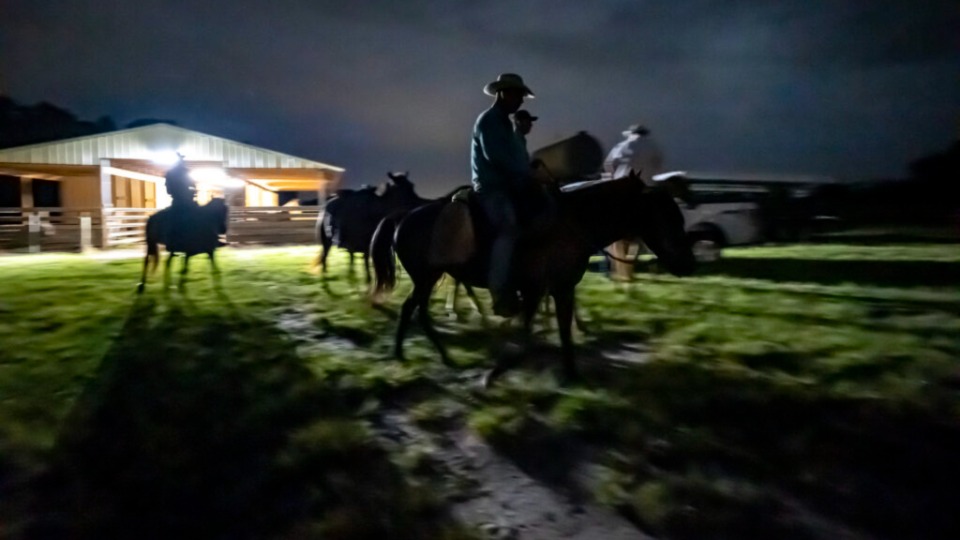
Legacy: another seven decades?
Pointing to the ranch’s past — the operations and the innovations, the people and the processes — as well as its current emphasis on sustainability, Richardson says he sees a bright future for Deseret Ranches.
“We’ve been here for 70 years, and because of the essence of sustainability, we want to — and can — be here for another 70 years and beyond. In operating this vast expanse of land in a way that will allow it to be here for generations to come, we can continue to improve not only the cattle but the land resources and all that we do on the ranch.”
With Deseret Ranches being wise stewards and striving to be world-class on all four of the sustainability pillars, the ranch, its people, its relationships and its benefits will be here for the long haul, he said.
“We’re going to be here and be a part of this community, this part of Florida, for generations to come. And that, to me, is an important legacy.”
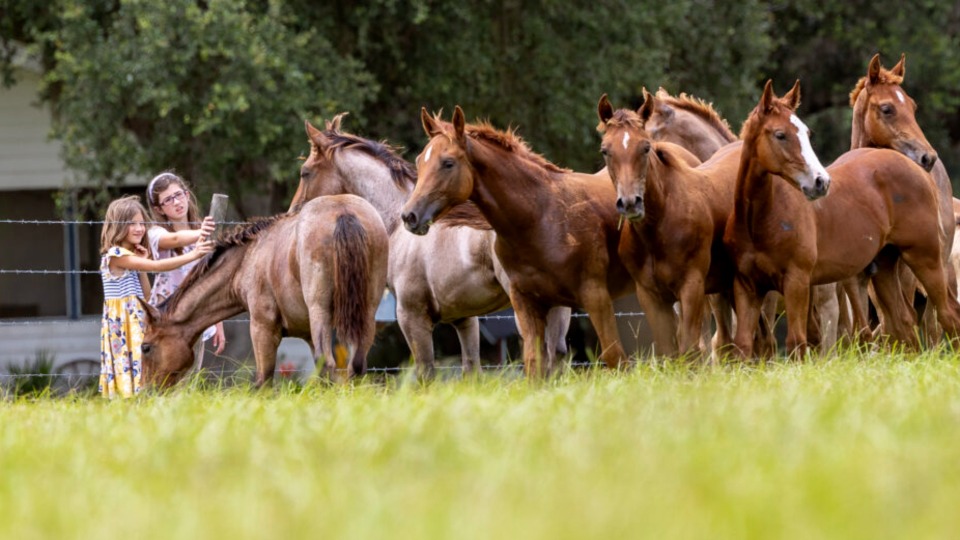
Copyright 2021 Deseret News Publishing Company